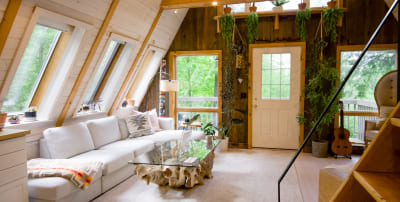Millennial and Gen Z Housing
Trends in 2025
Young buyers are changing how the property market works. Unlike
past generations who often focused on big homes and traditional layouts, Gen Z
and millennials place more value on convenience, technology, and smart use of
space. They care less about owning large plots of land or following old housing
trends. Instead, they want homes that fit modern lifestyles, support remote
work, and reduce living costs. They also look for features that make life
easier, such as smart devices, eco-friendly systems, and community-based
amenities. This shift is pushing developers to rethink designs and focus on
functionality, affordability, and innovation.
Prime Location and
Connectivity
Gen Z and millennial buyers place high importance on where a property is
located. They look for homes that are close to offices, universities, shopping
areas, and public transit. For them, saving time on daily travel is more
valuable than owning a large house far from the city. Walk able neighborhoods,
nearby cafes, and easy access to metro or bus routes often influence their
decision more than extra square footage. They prefer vibrant, well connected
communities that support both work and lifestyle needs.
Smart and
Connected Homes
For younger
buyers, technology is no longer a luxury, it is a basic requirement. Features
like smart locks, automated lighting, and energy-efficient appliances are at
the top of their checklist. Reliable high-speed internet is non-negotiable,
especially with the rise of remote work, online education, and streaming.
Beyond the home itself, digital convenience also shapes their buying journey.
Many rely on virtual property tours, online booking systems, and PropTech
platforms to explore options before making a decision. A property that offers
both modern in-house technology and seamless digital access stands out strongly
with Gen Z and millennial buyers.
Lifestyle
Amenities over Home Size
Younger buyers often prioritize lifestyle features over the overall size of a
home. Instead of paying more for extra square footage, they see greater value
in shared spaces that improve daily living. Access to gyms within the building,
rooftop lounges for social gatherings, co-working areas for remote work, and
community centers for events or networking add more appeal than a bigger but
isolated house. These amenities allow them to balance work, fitness, and social
life without leaving their community. For many, convenience and shared
experiences outweigh the cost and upkeep of a larger home.
Adaptable Living
Spaces
Gen Z and millennial buyers want homes that can easily adjust to their changing
needs. Open floor plans, convertible rooms, and multi-use designs are highly
attractive. A single space should work as a home office during the day, a
workout area in the evening, and a social spot when friends visit. This
flexibility is especially important with the rise of remote work and side
projects. Instead of fixed layouts, they prefer homes that give them the
freedom to create different zones for work, hobbies, and gatherings without
needing more space.
Sustainable and
Cost-Saving Homes
Younger
buyers are paying close attention to the environmental impact of their homes.
Features like solar panels, rainwater harvesting systems, and eco-friendly
construction materials are becoming strong selling points. These upgrades not
only help reduce carbon emissions but also cut down on monthly expenses such as
electricity and water bills. Gen Z and millennial see sustainability as both a
responsibility and a financial advantage. A home that supports green living
aligns with their values and offers long-term savings, making it far more
appealing than a traditional property without these features.
Affordable and
Flexible Ownership
For many
young buyers, affordability is the deciding factor when choosing a property.
Rising real estate prices make flexible payment options, such as easy installment
plans, very attractive. Some are also turning toward fractional ownership,
where investment is shared to lower the financial burden. Instead of stretching
for large and expensive houses, Gen Z and millennials often prefer smaller,
budget-friendly units that they can realistically afford. They want ownership
that feels achievable without long-term financial strain, and developers who
provide accessible financing options are more likely to win their interest.
The
Economic Times reports that millennials and Gen Z will make up the largest
share of homebuyers by 2030. This shift means their preferences will shape how
the real estate market develops in the coming years. From location and
technology to affordability and sustainability, their expectations are becoming
the new benchmark. Developers who fail to adapt risk losing relevance, while
those who respond with modern designs, smart amenities, and flexible financing
will be better positioned to capture this growing demand.


